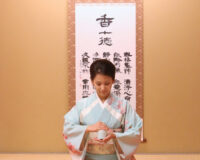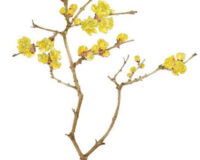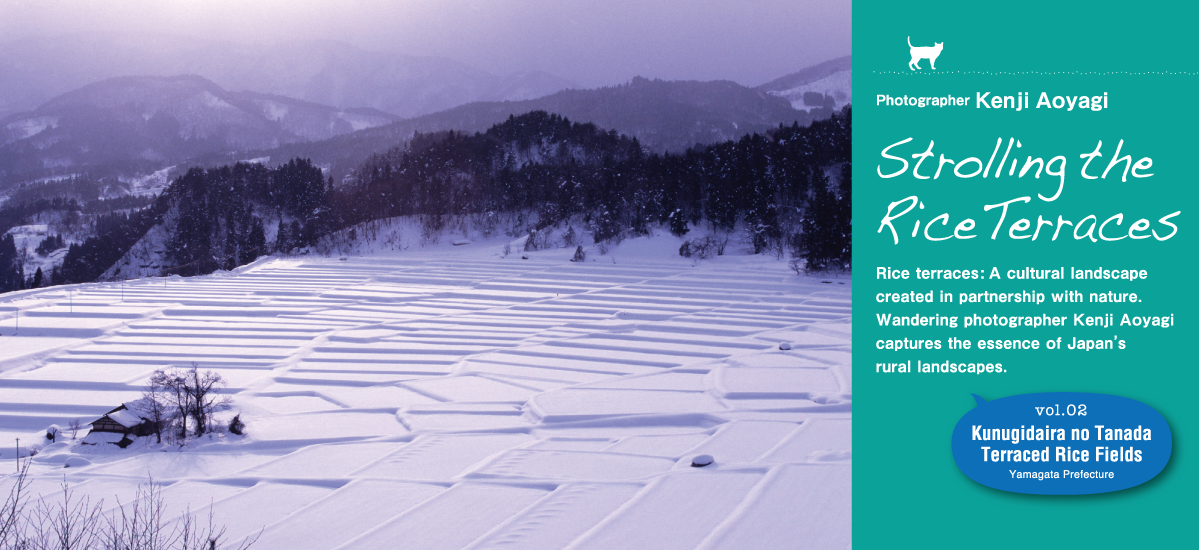
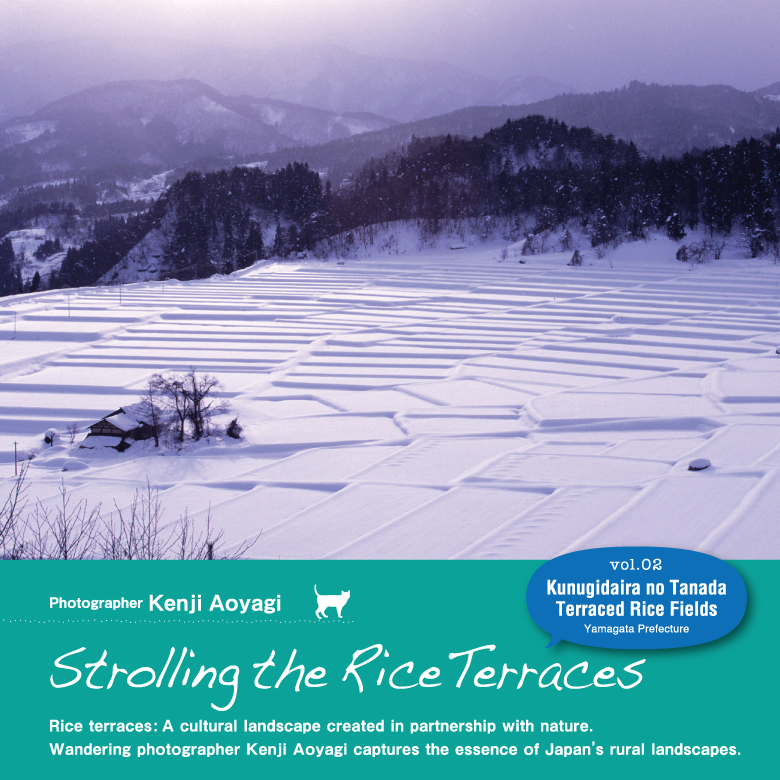
The Kunugidaira no Tanada (Kunugidaira Rice Terraces) in Yamagata Prefecture are counted among Japan’s ‘Top 100 Rice Terraces’. This comparatively recent agricultural landscape was used to grow mulberries until it was converted to rice cultivation between 1943 and 1946 as part of a drive to increase food production in Japan.
Text and Photos : 青柳健二 Kenji Aoyagi / English Version : Judy Evans
Keyword : Northern Japan / Rice Terraces / Farming / Agriculture / Yamagata Prefecture / Tōhoku
A Traditional Agricultural Landscape Safeguarded through the Efforts of Locals
Looking down on Kunugidaira no Tanada from Ippon-Matsu Park in January, the snow-covered rice terraces are breathtakingly beautiful. There is a tangible sense of space from this vantage point, with the rice terraces fanning out below and the Mogami River and Asahi Ranges visible in the distance.
Snow-covered rice terraces like this are unique to Japan. Rice is originally a tropical grain and it has taken humanity thousands of years to develop varieties that can be cultivated in areas of such heavy snowfall. While admiring the rustic beauty of this place, one also feels a sense of awe at the determination of the people who farm this land.
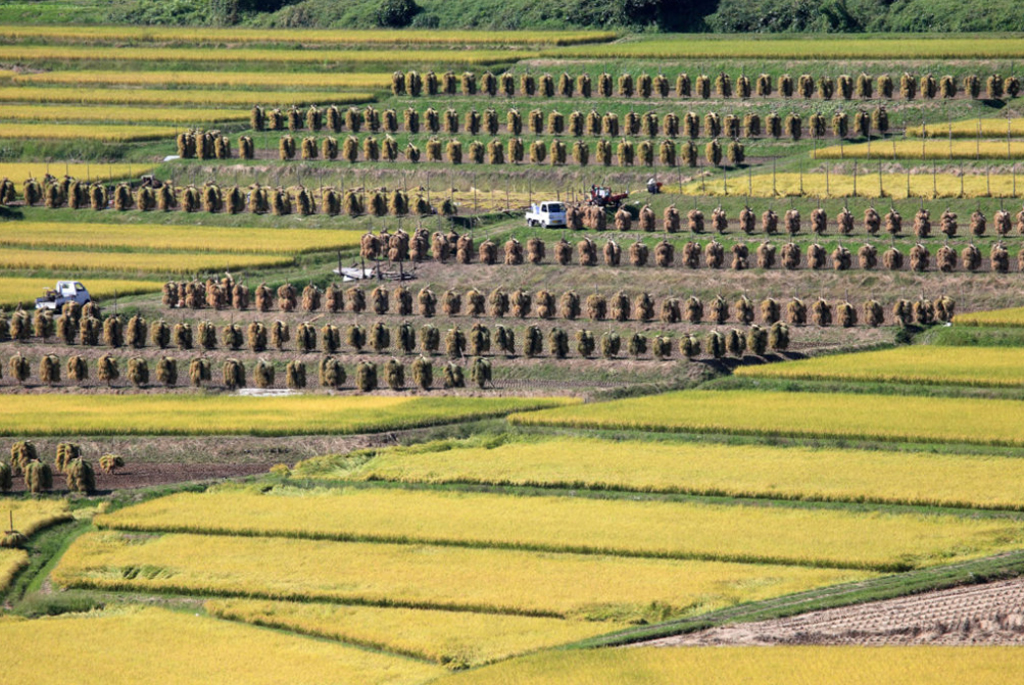
In autumn, the Kunugidaira no Tanada landscape takes on a surreal appearance. Rows of stakes laden with bundles of harvested rice seem like heavily shrouded figures maintaining a silent vigil over the fields. This method of drying the harvested rice by stacking the sheaves on stout poles is called inagui, and can be seen from the beginning of harvest in late September through until mid-October. The flavour of the rice is said to be improved by drying it this way in natural sunlight.
One of the unique aspects of this agricultural landscape lies in how it came to look as it does today. Kunugidaira was terraced comparatively recently, at a time when mechanisation was increasingly being used to improve efficiency in agricultural production. Yet this landscape retains a sense of traditional rusticity that belies its relatively recent development. Part of Kunugidaira’s old world appearance is achieved through the construction of an unsealed farm access road that was designed to curve its way elegantly between the fields, rather than being straight like most other modern farm roads.
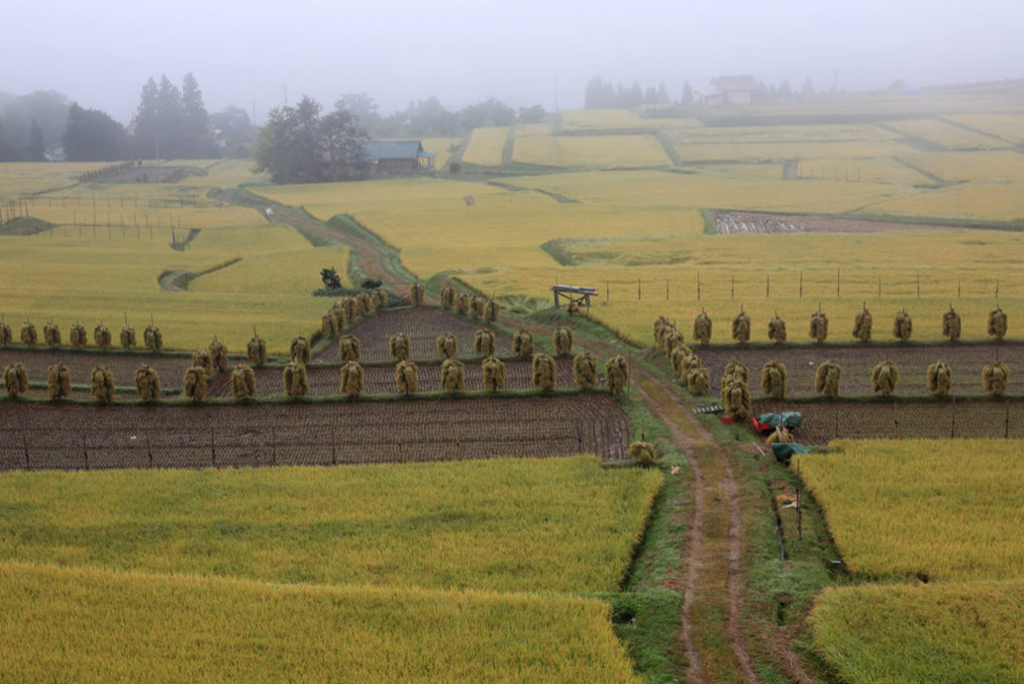
This road, which can be seen from a purpose-built vantage point above the tanada, bisects the terraces and enables farm trucks and machinery to access the fields. Much discussion and compromise went into its design. Many local farmers originally felt that a conventional straight road, sealed with asphalt and easily maintained, would be appropriate from a farming point of view. A desire to preserve traditional agricultural landscape values was at odds with the need to increase efficiency and improve people’s way of life. However, with a great deal of foresight, conservation-minded locals persevered. Repeated meetings and discussions were held until a mutually satisfactory solution was finally agreed upon. This unassuming access road looks completely natural in its environment and gives little hint as to the effort that went into its creation.
The decision of the local people to preserve the traditional values of their landscape has also added value to their agricultural products and created a new workforce to maintain the landscape. Regular events are held where locals work together to keep their hometown looking beautiful.
Kunugidaira is not the only place in Japan where the agricultural landscape has the potential to add value to local goods and services. The care and foresight that went into the design of Kunugidaira’s rice terraces could possibly serve as a reference point for other agricultural communities thinking about their future directions.
Inquiries
Asahi Town Office (in Japanese)
Phone: 0237-67-2113




